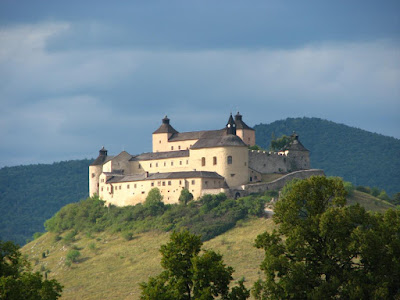The end of the year marks the end of my third year of blogging. Along the way, I have posted 120 posts on various topics related to Hungarian medieval art, which generated over 90.000 page views to this date. My blog was featured in several online journals - for example in Vidimus or in Peregrinus, and several posts have been picked up by other blogs and online news media. I will give a sampling below of the most popular posts on the Medieval Hungary blog, giving a brief update about their topics as well.
The Digital Journal and SCAtoday.net both picked up the report on the discovery a grave from the period of the Magyar Conquest. Found neat the village of Bugyi, the sabretache plate discovered in the grave has since been cleaned and restored, and showed at a traveling exhibition (titled "Not without a trace...") organized by the Pest County Museum system. It was also included in an exhibition first organized at the Houses of Parliament in Budapest, which was aimed at showing the most spectacular recent archaeological finds, in order to pressure lawmakers to not weaken cultural heritage laws. Although this attempt was unsuccesful, the exhibition itself was successful, and is now travelling around the country. The exhibition is accompanied by a very nicely produced website, which is only available in Hungarian. Below you can find a picture of the sabretache plate in its conserved state.
 |
| 10th century sabretache plate from Bugyi-Felsővány (source: mvmsz.info) |
Moving on to later centuries, most interest was generated by my report on the discovery of 14th century frescoes right in the middle of Budapest, in the Inner City Parish Church of Pest. The news was picked up by Medieval News and other online sources. My brief report on the find, consisting of two blog posts (see part I and part II) was later summarized for the newsletter of the International Center of Medieval Art (April 2011 issue), while my report on Hungarian azurite, found in the background of the painting, was picked up by National Geographic Hungary (May 2011). I also reported on some publications about the murals in a third blog post.
 |
| Detail of the Virgin and Child at the Inner City Parish Church, Pest |


